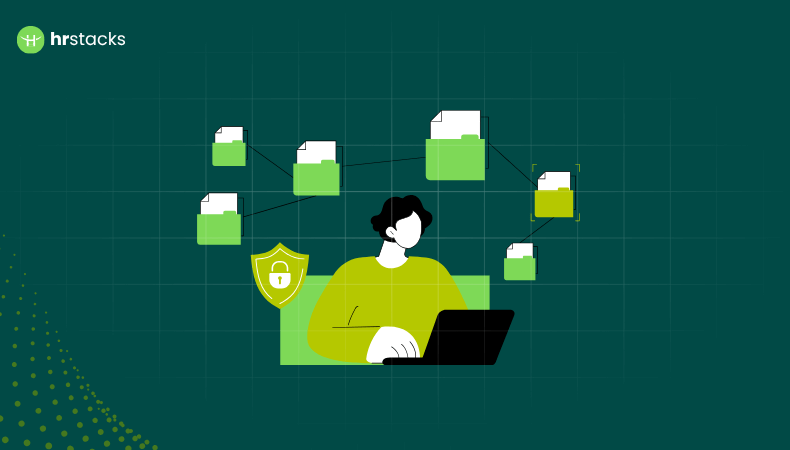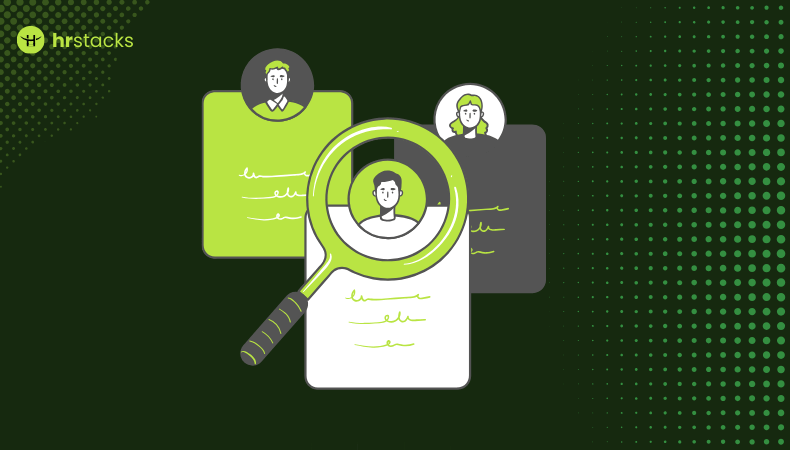When your HR database is a mess, it doesn’t just slow things down; it can lead to real consequences. Think about it: outdated addresses can mess up tax forms, duplicate employee profiles can throw off headcount planning, and incorrect bank details might delay someone’s paycheck.
Mistakes like these don’t just slow things down; they create headaches for real people. That missed paycheck or misfiled tax form? It’s not just a glitch. Clean, reliable data might not sound exciting, but for HR teams, it’s the difference between chaos and confidence.
At its core, data hygiene involves maintaining clean, accurate, consistent, and secure employee data. That includes everything from making sure names are spelled right to ensuring only the right people have access to sensitive information.
Clean HR data is just one part of the picture. If that data isn’t properly protected, even the cleanest system can become a liability. That’s where cybersecurity comes in, and why HR leaders need to understand its role.
Key Takeaways
- HR teams are increasingly targeted by cybercriminals due to their access to sensitive employee data.
- The majority of breaches stem from preventable human errors like phishing clicks or misdirected emails.
- New threats like AI-powered phishing and deepfake voice scams are making attacks more convincing than ever.
- Cybersecurity isn’t just IT’s job, HR plays a crucial role in protecting people, data, and trust.
- A layered security approach combining tools like MFA, EDR, and encryption offers stronger protection.
- Regular training and a tested incident response plan can significantly reduce the impact of a cyberattack
What Does Cybersecurity Really Mean for HR?
Cybersecurity is all about protecting the digital world we rely on, such as your apps, devices, and the data they hold, from unauthorized access, damage, or misuse. At its core, it’s a mix of tools, habits, and strategies aiming to keep information accurate, private, and available only to those who should see it.
That protection rests on three foundational goals, often referred to as the “CIA triad”:
- Confidentiality: Make sure sensitive info, like payroll records or employee IDs, is only accessible to authorized users. Think of it like a locked file cabinet in a shared office.
- Integrity: Ensure data stays accurate and consistent. A misplaced entry or hacked field can corrupt an entire system, so checks and access controls guard against unwanted changes.
- Availability: Keep systems and data accessible when needed; no one wants a locked pay portal or a frozen HR database when deadlines loom.
Cybersecurity isn’t just about IT, it’s about making sure your data, systems, and people are protected. That means using strong passwords, training your team to spot scams, and having a plan if something goes wrong. It’s how you stay ahead of everything from malware to phishing emails.
In professional settings, cybersecurity is more than an IT concern; it underpins trust, compliance, and business continuity. A breach can mean lost money, damaged reputation, or costly downtime. Cybersecurity safeguards workplace integrity and ensures reliable, secure digital operations.
Why HR Teams Can’t Afford to Ignore Cybersecurity?
Even a single breach can cost a business millions, not just the direct damage, but lost productivity, legal fees, and reputational fallout.
The average global data‑breach expense in 2024 was $4.88 million (Source: IBM Report), and cybercrime now racks up well over $1 trillion in annual global losses.
Beyond dollar signs, compromised data erodes trust. Customers and partners expect their information to be handled responsibly, and once that trust is broken, it’s hard to rebuild.
A major incident can disrupt operations for months, triggering regulatory fines and long-term damage to your brand or credibility.
- Stealthy, sophisticated attacks: Criminals are using hard-to-detect techniques like fileless malware and multi-stage attacks that slip past old defenses. If you’re not watching trends, dangerous tactics can fly under the radar.
- Protecting reputation: A single public breach can instantly erode trust. Customers and partners who hear about a hack often flee. High-profile incidents lead to lawsuits, fines, and bad publicity. Framing cybersecurity as “extra cost” can backfire if an attack wipes out brand value.
- Regulatory pressure: New laws demand strict security. For example, the EU’s NIS2 rules now force companies to report breaches within 24 hours or pay hefty fines. Hospitals, banks, and other sectors face tough audits. Falling behind rules means big legal and financial risk on top of any breach.
- Expanded attack surface: Remote work and cloud services put thousands of new devices on networks (home PCs, IoT gadgets, etc.). Every online printer, fridge, or smartphone adds a possible entry point. That makes it even more critical to manage and monitor endpoints.
- Financial impact: Attacks can cost millions. For instance, research shows recovering from a ransomware hit now averages about $2.73 million. Beyond ransom payments, there’s downtime and lost business. Smart investment in security tools often pays for itself in avoided losses.
- Urgent patching needed: Simply put, known bugs breed breaches. If software and firmware aren’t kept up to date, attackers exploit those weaknesses fast. Vulnerability scanners, regular patch cycles, and audits aren’t just checks on a list; they’re lifelines in cyber resilience.
Why Human Error Is Still the #1 Cybersecurity Risk
Most breaches start with a simple human mistake, often just someone clicking the wrong link or sending sensitive data to the wrong person.
[Tessian Research] The Psychology of Human Error report found that around 88% of incidents could be traced back to human error, someone clicking a bad link or sending data to the wrong person.1. Phishing and social tricks
Criminals still rely on email and phone scams. About three-quarters of major breaches involve some kind of phishing attack (like pretending to be a coworker or vendor).
In 2022, over half of the surveyed employees admitted they’d been fooled by a fake email from “their boss”. With AI tools, attackers can now pump out convincing phony messages or even deepfake audio and video.
For example, scammers have impersonated executives in video calls to trick staff into wiring money. Training and simulated phishing drills are essential to keep people sharp against these tricks.
2. Misdirected data
Simple mistakes matter. In many cases, sensitive data was leaked because an employee sent an email to the wrong address. One report found that nearly half of breaches caused by human error involved accidentally emailing data to the wrong person.
Think about it: a one-character typo, and you could be handing customer data to the world. Using tools that warn about external addresses or require confirmation before sending sensitive information can catch errors before they become headlines.
3. Generational differences
Studies show younger staff click suspicious links much more often than older colleagues. That suggests training should be tailored and never stop.
Regular awareness sessions, reminders, and even gamified learning can help keep everyone from falling for the latest scam.
Top Cybersecurity Threats HR Leaders Should Know
Just as a pair of glasses can sharpen our focus on cluttered code, advanced analytics and AI can reveal hidden threats. But attackers are also using these tools. Below are some of the trendiest threats shaping 2025:
- Ransomware-as-a-Service (RaaS): RaaS makes it easier than ever for non-technical criminals to deploy ransomware. Kits are available on subscription and offer features like billing dashboards and customer support, so even amateurs can carry out sophisticated attacks. Expect more of these incidents in 2025.
- AI-Powered Social Engineering & Deepfakes: Attackers are using AI to craft personalized phishing messages and generate convincing voice or video impersonations during calls. Victims may see a CEO’s face on screen or hear their voice, and ask for wire transfers or credentials, unaware it’s a forgery.
- Agentic or Autonomous AI Attacks: Automated agents can now scout, plan, and execute attacks with minimal human instruction, such as targeting credentials, APIs, or internal tools via natural-language prompts. This lowers the bar for attackers and speeds up operations.
- Quantum Computing Threats: While full-scale quantum hacking is still a future concern, attackers are already snatching encrypted data now, waiting to decrypt it once quantum tech matures. That strategy is called “harvest now, decrypt later.”
- IoT and 5G Vulnerabilities: The growing number of internet-connected devices, especially in industries like healthcare, manufacturing, or smart offices, means more security blind spots. Misconfigured IoT gear or exposed 5G endpoints create easy entryways for attackers.
- Highly Evasive Adaptive Threats (HEAT): HEAT attacks slip past common defenses by embedding harmful code in files or URLs that appear safe, often bypassing email filters and malware scanners with obfuscation or time‑based activation.
- Encryption-less / Pure Extortion Ransomware: Some threat groups now skip encrypting files and instead steal data outright, threatening to leak it unless their demands are met. These attacks can fly under the radar of traditional ransomware detection tools.
- Blended Hacktivist Extortion: Groups are now mixing financial motives with political aims, launching breaches to push propaganda or destabilize public opinion as much as to collect ransom payments.
How to Build a Strong, Multi-Layered Cyber Defense
Think of these layers like a seatbelt, airbag, and crash sensor; each one might fail on its own, but together, they dramatically reduce the damage.
Humanities matter in technology, such as playbooks, training, and prioritized tools, making defenses more than just code.
When threats are smart, fast, and relentless, your defenses need to be even smarter and built on multiple layers suggested below:
1. Use Multi-Factor Authentication (MFA) Wherever Possible
Passwords alone aren’t enough anymore. Adding MFA, like authenticator apps, biometrics, or hardware tokens, can block up to 80% of breach attempts, even if a password is compromised. It’s crucial for accessing HR systems, financial tools, and any sensitive portals.
2. Monitor Devices with EDR and XDR Tools
Antivirus can’t keep up with today’s threats. EDR tools monitor devices continuously and react in real time. XDR expands that coverage across cloud, network, endpoints, and servers, offering unified visibility and faster response.
3. Detect Threats Faster with AI and Automation
AI tools can scan volumes of traffic and flag odd behavior, from logins coming from strange locations to unusual file transfers. The best systems act instantly, such as isolating devices, blocking domains, or raising alerts, so humans can focus on what matters most.
4. Encrypt Data and Design Security from Day One
Encrypt sensitive data both at rest and in transit using modern standards like AES or end-to-end encryption. For new systems, use a secure-by-design approach, where access control and encryption are baked into the architecture from the start.
5. Use CEM to Continuously Identify Vulnerabilities
CEM tools continuously map where your vulnerabilities are, like unpatched software, misconfigurations, or weak credentials, and suggest where to fix first. Organizations that adopt CEM are reported to be three times less likely to suffer breaches.
6. Set Traps with Deception Technology
Deception tools drop traps (like fake files or decoy systems) in the network. If an intruder touches a decoy, the system knows immediately and can isolate them. This method cuts through alert fatigue with high-precision detection.
7. Train Your Team, and Build a Security-First Culture
Tools only go so far; users still open the gates. Regular phishing drills, scenario-based training, and a “see something, say something” culture help staff spot scams and report them. Gamified training programs boost engagement and retention.
8. Prepare and Practice Your Incident Response Plan
Accidents happen. Having a clear, practiced incident response playbook helps contain damage fast, identify, isolate, notify, and recover. Also, keep automatic, off-network backups so ransomware attacks don’t shut you down.
9. Share Threat Intelligence with Industry Peers
No one organization sees everything. Sharing threat data with peers, industry groups (like ISACs), or government CERTs accelerates detection and response, and helps lock attackers out before they strike.
10. Invest in Your Cybersecurity Team and Culture
Security teams are under pressure, skills are scarce, and burnout is real. Investing in continuous learning, structured career support, and reducing firefighting workload builds resilience. Teams with leadership backing perform better and stick around.
Final Thoughts: Staying Ahead of Modern Cyber Threats
Effective defense today means staying a step ahead of ever-evolving threats. Attackers are using AI to morph malware and deepfake social-engineering ploys, so relying on yesterday’s tactics leaves you exposed.
Secure-by-design strategies are no longer optional. Layered approaches like the NIST Framework’s Identify–Protect–Detect–Respond–Recover cycle help contain breaches before they spread.
Simple hygiene measures, such as strong passwords, regular patches, and multi-factor authentication, are the foundation of any program, as emphasized by CISA.
People are still the easiest target, which is why regular training and phishing tests matter so much. AI tools are getting good at spotting weird stuff, like someone logging in from a country where your team doesn’t even operate.
Vigilant vendor management guards against supply-chain compromises, and clear incident-response plans ensure swift recovery when prevention fails. Combine these tactics, review them often, and your cybersecurity posture will stay resilient as risks change.










